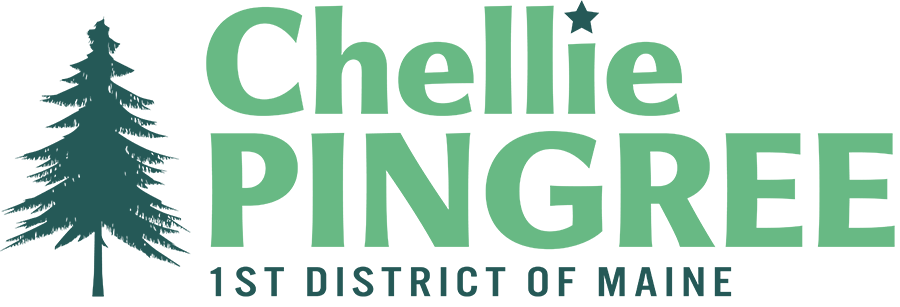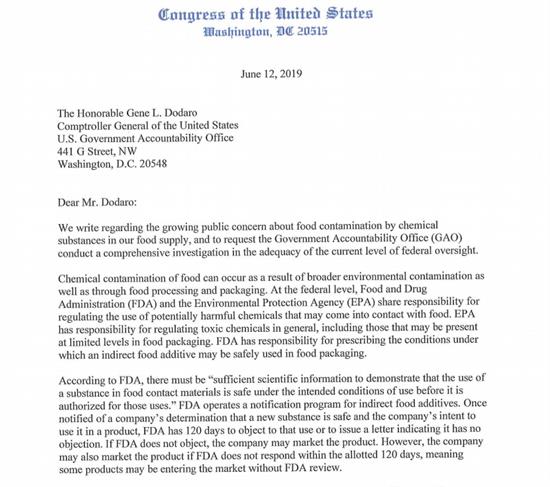Press Releases
Pingree, DeLauro Send GAO Letter Regarding Chemical Food Contamination
Washington,
June 13, 2019
Congresswoman Chellie Pingree (D-Maine) and Congresswoman Rosa DeLauro (D-Conn.) today sent a letter to the U.S. Government Accountability Office (GAO) concerning food contamination by chemical substances in our food supply, and to ask the GAO to review the U.S. Food and Drug Administration’s (FDA) oversight of indirect food additives. “Packaging and other materials that food contacts contain specific types of chemicals, including bisphenols, which are used in the lining of metal cans for canned food products; perchlorates, an antistatic agent that is used in plastic packaging; perfluoroalkyl substances (PFAS), which are used in grease-proof paper and packaging; and phthalates, which are used to make plastic packaging. Trace amounts of these chemicals that are present in food as a result of its packaging, storage, or other handling are called indirect food additives. Phthalates, for example, can migrate into food products during processing, packaging, and preparation. Exposure to these chemicals may have adverse health effects, depending on the level of exposure,” said Pingree and DeLauro in the letter. “Previously, several consumer and environmental groups have expressed concerns that little data about the health risks of these chemicals found in food packaging are available or in the public domain so that independent scientists can examine it. Some of these groups have petitioned FDA to address potential flaws in how the agency estimates exposure to these chemicals,” they continued. In light of recent reports indicating the FDA has detected PFAS compounds in many food products, Pingree and DeLauro asked the GAO to determine what actions are being taken at the federal level to evaluate the prevalence and risk of chemical food contamination. The letter also asked the GAO to provide information on FDA’s processes for assessing the safety of existing indirect food additives, current FDA challenges in regulating chemicals used as indirect food additives, and any international regulations or standards regarding indirect food additives that could be applicable to the United States. The letter is available online here. ### |


